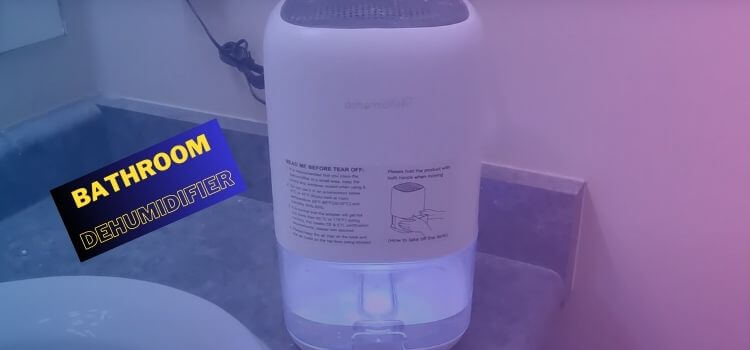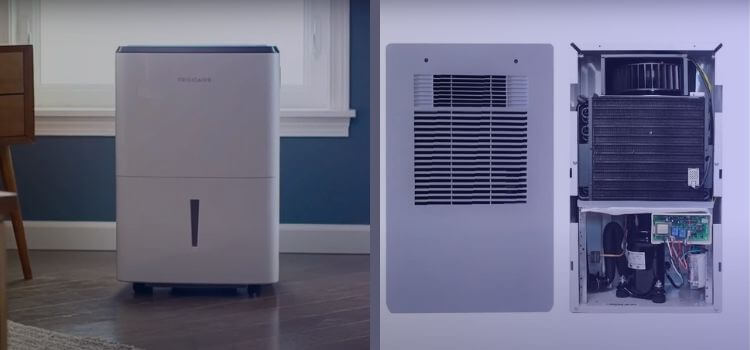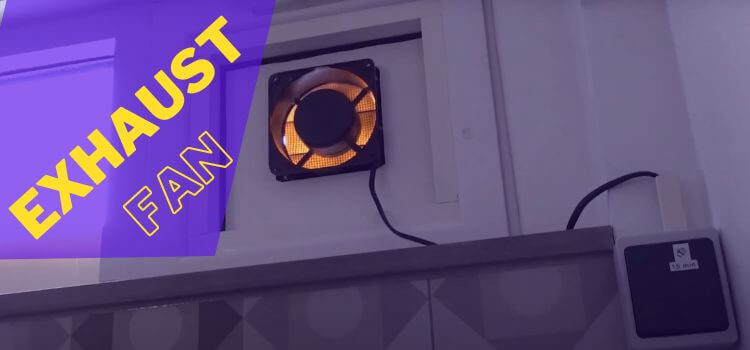Humidity and moisture can be persistent issues in bathrooms, leading to problems such as mold growth, peeling paint, and unpleasant odors. To combat these issues, two popular solutions are bathroom dehumidifiers and exhaust fans. In this article, we will explore the differences between these two options and help you determine which one is the right choice for your bathroom.
Understanding Humidity and Moisture in Bathrooms
Before delving into the specifics, it’s important to understand the role of humidity and moisture in bathrooms. Bathrooms are prone to high humidity due to the regular use of hot water, which leads to condensation on surfaces. This excess moisture creates an ideal environment for mold and mildew to thrive, posing health risks and potential damage to your bathroom.

The Purpose of Bathroom Dehumidifiers
Bathroom dehumidifiers are specifically designed to reduce and control humidity levels in bathrooms. They work by drawing in the moist air, condensing the moisture, and then releasing dry air back into
the room. Dehumidifiers are effective at preventing mold growth, eliminating musty odors, and protecting your bathroom fixtures and surfaces from moisture damage.Benefits of Using a Bathroom Dehumidifier
Using a bathroom dehumidifier offers several advantages. Firstly, it helps to create a healthier environment by reducing mold and mildew growth. Additionally, dehumidifiers can eliminate musty odors, enhance air quality, and protect your bathroom walls, ceilings, and furniture from moisture damage.

Types of Bathroom Dehumidifiers
There are two main types of bathroom dehumidifiers: portable and whole-house dehumidifiers. Portable dehumidifiers are compact and can be easily moved around. They are suitable for smaller bathrooms or areas with occasional moisture issues. Whole-house dehumidifiers are designed to dehumidify the entire house and are typically installed as part of the HVAC system.
The Role of Exhaust Fans in Bathrooms
An exhaust fan, also known as a ventilation fan, is a mechanical device that helps remove stale air, moisture, and odors from the bathroom. These fans extract humid air from the bathroom and expel it outside, allowing fresh air to enter. Exhaust fans are typically installed on the ceiling or walls and are often connected to the bathroom’s light switch for automatic operation.
Benefits of Using an Exhaust Fan
Using an exhaust fan in the bathroom offers several advantages. Firstly, it helps remove excess humidity, reducing the chances of mold and mildew growth. It also helps eliminate odors, smoke, and fumes, creating a more pleasant and healthier environment. Additionally, an exhaust fan can prevent the accumulation of moisture on bathroom surfaces, which can lead to damage over time.

Types of Exhaust Fans
There are various types of exhaust fans available, including ceiling-mounted fans, wall-mounted fans, and combination fans with integrated lights or heaters. Ceiling-mounted fans are the most common and are suitable for bathrooms with a standard ceiling height. Wall-mounted fans are ideal for bathrooms with limited ceiling space, while combination fans offer additional functionalities for enhanced convenience.
If this information is helpful for you, keep reading and don’t miss the FAQs Section.
Choosing the Right Solution for Your Bathroom
When deciding between a bathroom dehumidifier and an exhaust fan, consider the following factors:
Humidity Level
If your bathroom experiences consistently high humidity levels or if you live in an area with high moisture content, a dehumidifier may be more effective.
Bathroom Size
The size of your bathroom plays a role in determining the appropriate solution. Larger bathrooms may require a combination of dehumidifiers and exhaust fans for optimal moisture control.
Frequency of Use
Bathrooms with heavy water usage, such as those used by multiple family members or in commercial settings, may require a dehumidifier to effectively control humidity.
Noise Sensitivity
If a quiet bathroom environment is essential, a dehumidifier may be preferable to an exhaust fan.
Personal Preference
Some individuals may prioritize noise levels, energy efficiency, or ease of maintenance. Assess your preferences to make an informed decision.
Cost Comparison
The cost of bathroom dehumidifiers and exhaust fans can vary depending on factors such as brand, features, and installation requirements. Generally, exhaust fans are more affordable upfront, while dehumidifiers may have a higher initial cost. However, dehumidifiers can offer energy savings in the long run by efficiently managing humidity levels.
Pros and cons of Bathroom Dehumidifier
PROS
CONS
Pros and cons of Exhaust Fan
PROS
CONS
Which Option is More Effective for Controlling Humidity?
The effectiveness of bathroom dehumidifiers and exhaust fans in controlling humidity depends on your specific requirements. If you have a small bathroom with occasional use, an exhaust fan may be sufficient. However, for larger bathrooms or those with higher humidity levels, a bathroom dehumidifier offers more comprehensive control and protection against mold and mildew.
Introducing the revolutionary air purifier that redefines clean air. With its cutting-edge technology and sleek design, it effortlessly removes 99.99% of airborne pollutants, allergens, and odors, leaving you with nothing but pure, refreshing air. Say goodbye to respiratory irritants and hello to a healthier, happier home with the best air purifier on the market.
Conclusion
When it comes to choosing between a bathroom dehumidifier and an exhaust fan, there are several factors to consider. Dehumidifiers excel at moisture control, mold prevention, and overall air quality improvement. On the other hand, exhaust fans efficiently remove steam and odors, enhancing ventilation. Assess your specific needs, bathroom size, budget, and personal preferences to make an informed decision. In some cases, a combination of both solutions may be the ideal approach to maintain optimal humidity levels in your bathroom.
FAQs
Yes, you can use both a dehumidifier and an exhaust fan in your bathroom. This combination can provide even better moisture control and ventilation, especially in areas with high humidity levels.
The frequency of filter cleaning depends on the specific dehumidifier model and usage. It’s recommended to clean the filters every few weeks or according to the manufacturer’s instructions to maintain optimal performance.
Many modern bathroom dehumidifiers are designed to be energy-efficient. Look for Energy Star certified models that meet strict energy efficiency standards and help reduce electricity consumption.
Yes, you can install an exhaust fan in a bathroom without a window. Exhaust fans are designed to remove moisture and odors from enclosed spaces, making them suitable for windowless bathrooms.
The size of the exhaust fan you need depends on the square footage of your bathroom. As a general rule, aim for a fan that can provide at least one cubic foot per minute (CFM) per square foot of bathroom space. It’s recommended to consult the manufacturer’s guidelines or seek professional advice for accurate sizing.
As an Amazon Associate, I earn from qualifying purchases
